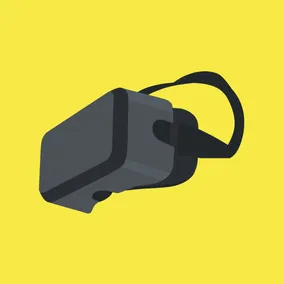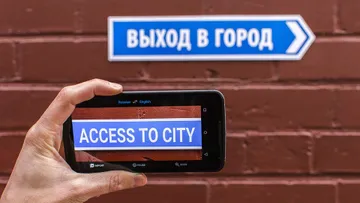XR: VR, AR, MR—What's the Difference?

Kaitlyn Irvine, Former Designer
Article Category:
Posted on
A definitive guide to navigating the landscape of Extended Reality.
What is XR?
Extended Reality (XR) refers to all real-and-virtual environments generated by computer graphics and wearables. The 'X' in XR is simply a variable that can stand for any letter. XR is the umbrella category that covers all the various forms of computer-altered reality, including: Augmented Reality (AR), Mixed Reality (MR), and Virtual Reality (VR).

AR Mobile App
View our workVirtual Reality
For ease, let’s start with a topic many of us are already familiar with—Virtual Reality (VR). VR encompasses all virtually immersive experiences. These could be created using purely real-world content (360 Video), purely synthetic content (Computer Generated), or a hybrid of both. This medium requires the use of a Head-Mounted Device (HMD) like the Oculus Rift, HTC Vive, or Google Cardboard.
VR has its own spectrum in and of itself. On one end you have WebVR, the simplest and most accessible form, and on the other you have Fully-Immersive VR, like Multi-sensory Cinema. Don't ask me how they incorporate taste, but apparently "Virtual Vineyards" are a thing now.
Augmented Reality
Augmented Reality (AR) is an overlay of computer generated content on the real world. The key note here is that the augmented content doesn't recognize the physical objects within a real-world environment. In other words, the CG content and the real-world content are not able to respond to one another.

Using Google Translate as an example, we can identify images and detect planes to place computer generated content, but the graphics can’t interact with the environment beyond what the camera captures. Let’s look at another example.
IKEA's latest mobile app, IKEA Place, uses AR to make a profound impact on the way we shop for furniture at home. The basic premise is, shoppers select an item from the catalogue, then, using the camera on their mobile device, can place digital furniture anywhere in a given room. The product is automatically sized to fit the space (which IKEA claims is 98% accurate) and can be moved or rotated within view. Amazing, right?
Where IKEA and AR generally fall short, though, is that the computer generated content is only anchored to the camera view. Using IKEA Place as an example, if I crouched behind a physical table or a chair to get a better look, the render would not 'disappear' behind the real-world object. That's where Mixed Reality comes in.
Mixed Reality
Mixed Reality (MR) removes the boundaries between real and virtual interaction via occlusion. Occlusion means the computer-generated objects can be visibly obscured by objects in the physical environment—like a virtual robot scurrying under your coffee table.
This is where things get interesting, because "hey, isn't all of this technically 'reality' that has been 'augmented' with computer graphics?" Technically, sure. But there is a key distinction in user experience (and developmental complexity) that does not afford these terms to be interchangeable.
Occipital, a Boulder-based spatial computing startup, is advancing the field of computer vision. Their premier product, Bridge, is a Mixed Reality headset that gives users the ability to map any given room and place computer generated objects within it.
In the Bridge introduction video, we meet a friendly virtual robot named Bridget. In the Bridget application, available on iTunes, Bridget can fetch a ball and navigate around physical objects in the room (Occlusion!). With accurate room mapping, MR offers something AR doesn't—a whole new level of real-virtual interaction.
In conclusion, Augmented Reality and Mixed Reality are not interchangeable terms. The general distinction is: all MR is AR, but not all AR is MR. AR is a composite. MR is interactive.
To recap, a quick glossary:
- Extended Reality (XR) refers to all real-and-virtual environments generated by computer technology and wearables. The 'X' in XR is a variable that can stand for any letter.
- Virtual Reality (VR) encompasses all immersive experiences. These could be created using purely real-world content (360 Video), purely synthetic content (Computer Generated), or a hybrid of both.
- Augmented Reality (AR) is an overlay of computer generated content on the real world that can superficially interact with the environment in real-time. With AR, there is no occlusion between CG content and the real-world.
- Mixed Reality (MR) is an overlay of synthetic content that is anchored to and interacts with objects in the real world—in real time. Mixed Reality experiences exhibit occlusion, in that the computer-generated objects are visibly obscured by objects in the physical environment.